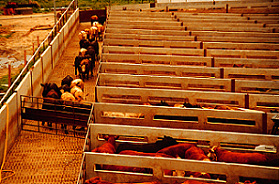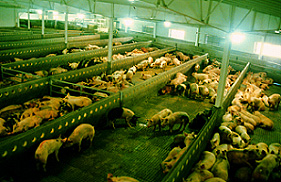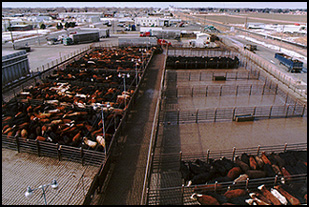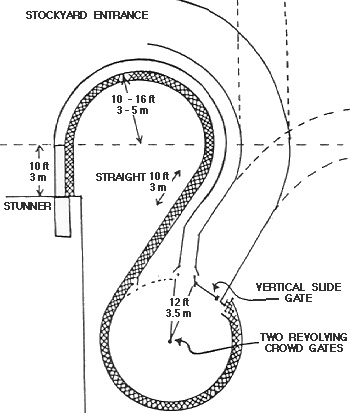

Herring bone pens with a belly rail in a cattle stockyard. The belly rail makes the gate very visible to cattle and prevents them from pushing on the gate.

Stockyards (lairage pens) for pigs in a large meat plant

Diagonal or herringbone pens eliminate sharp corners and facilitate cattle movement toward the central drive alley.
Stockyards and packing plants should have sufficient capacity so that animals can be promptly unloaded from trucks. Heat builds up rapidly in a stationary vehicle. To reduce PSE, pigs should be rested two to four hours prior to stunning. In large plants, pens should be designed to hold one or two truckloads. A few smaller pens will also be required for small lots. Pen space allocations may vary depending upon weather conditions, animal sizes and varying holding times. As a guideline, 20 square feet (1.85 sq.m) should be allotted for each 1,200-pound (544 kg) steer or cow, and six square feet (0.55 sq.m) per pig. These stocking rates will provide adequate room for "working space" when animals are moved out of the pen. If the animals are stocked in the pen more tightly, it will be more difficult for the handler to empty the pen. The recommended stocking rates provide adequate space for all animals to lie down.

 Click here to return to the Homepage for more information on animal behavior, welfare, and care.
Click here to return to the Homepage for more information on animal behavior, welfare, and care.